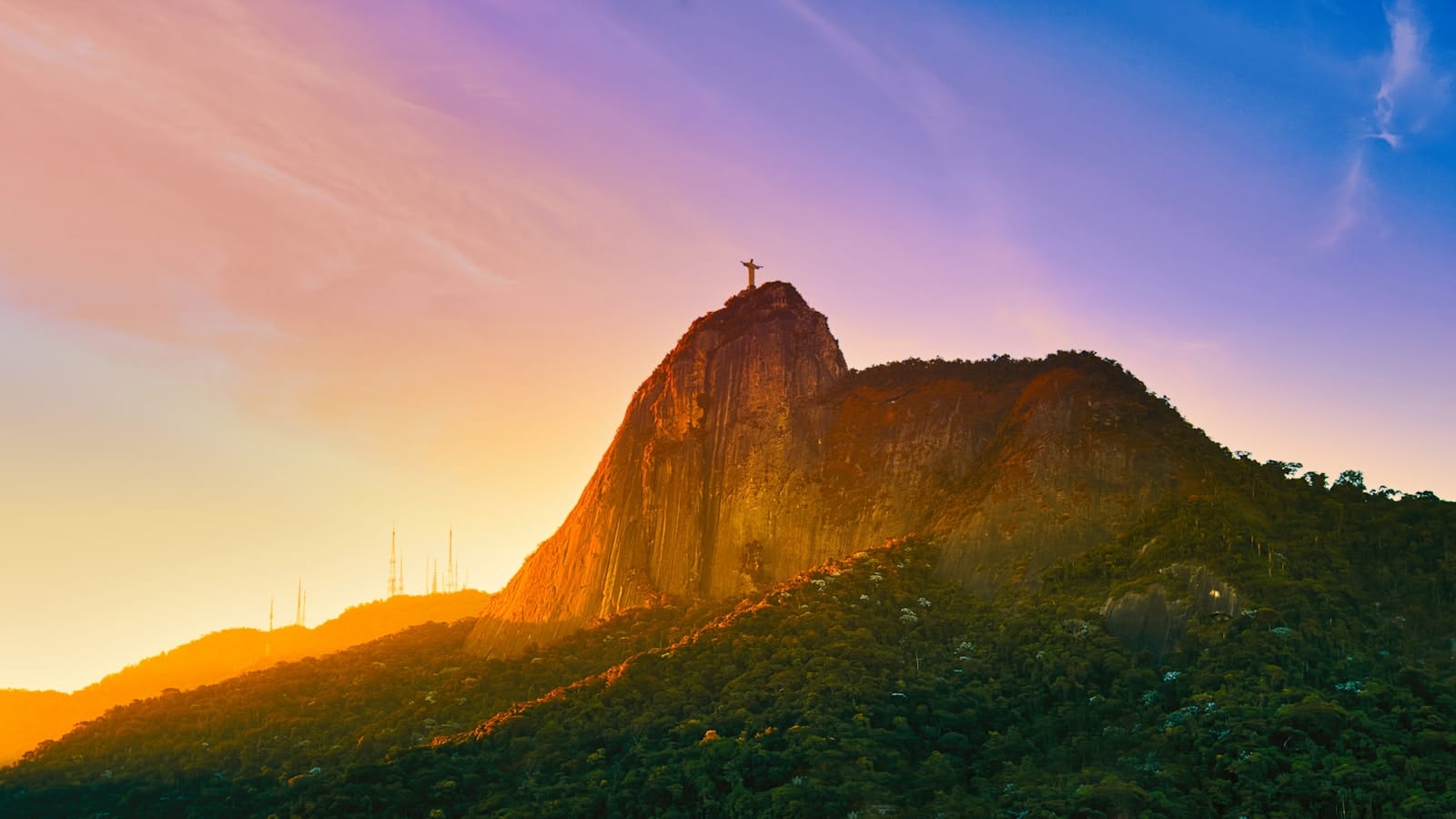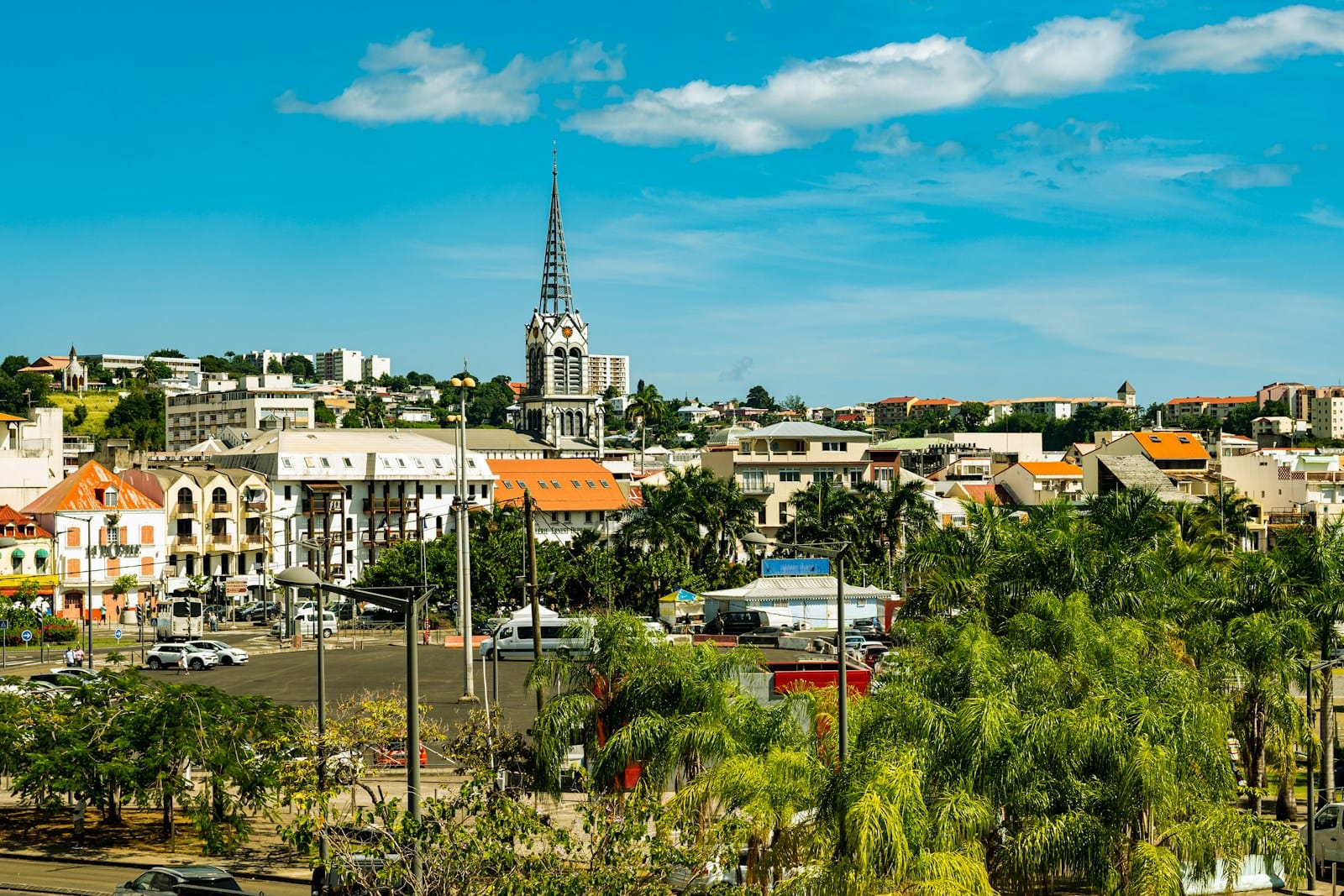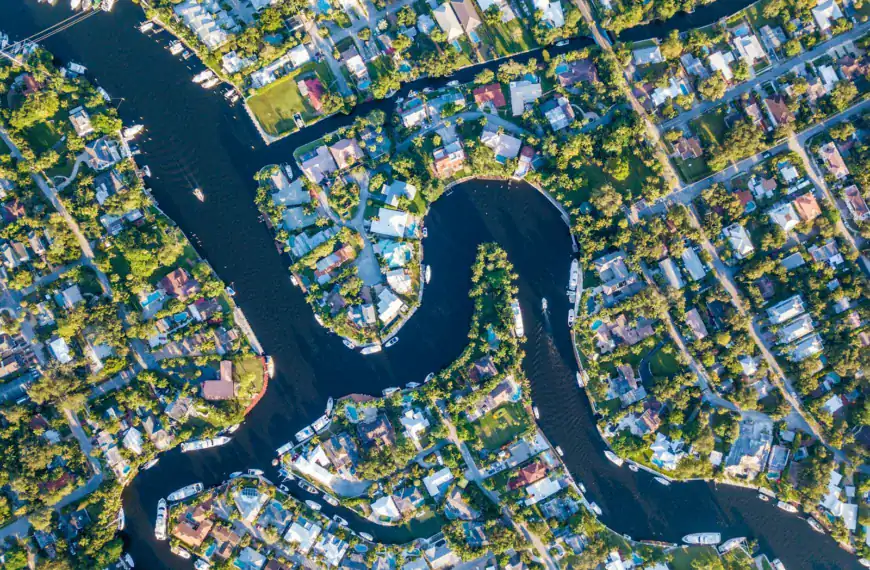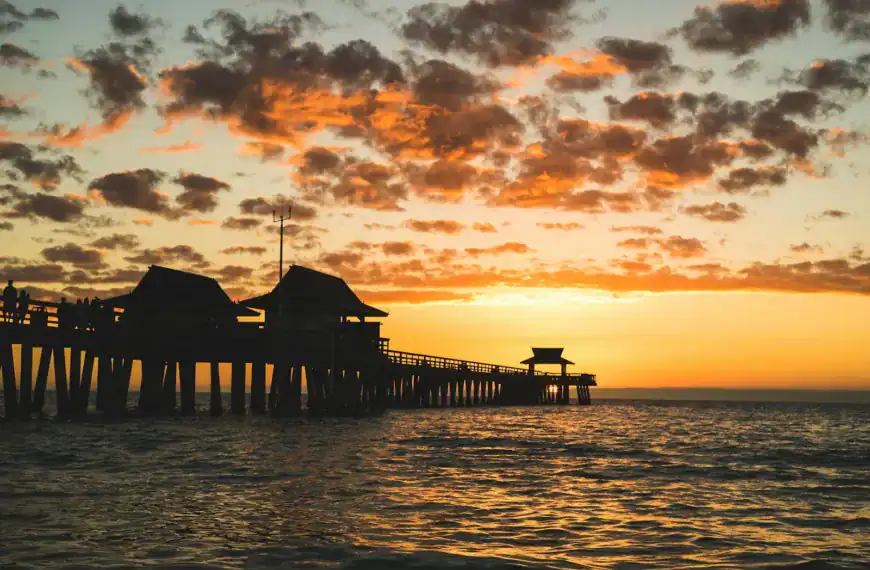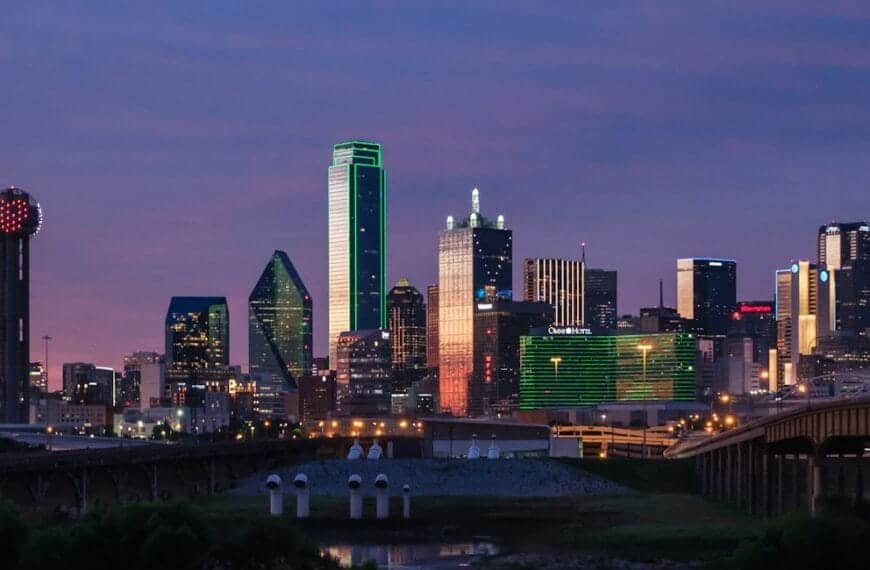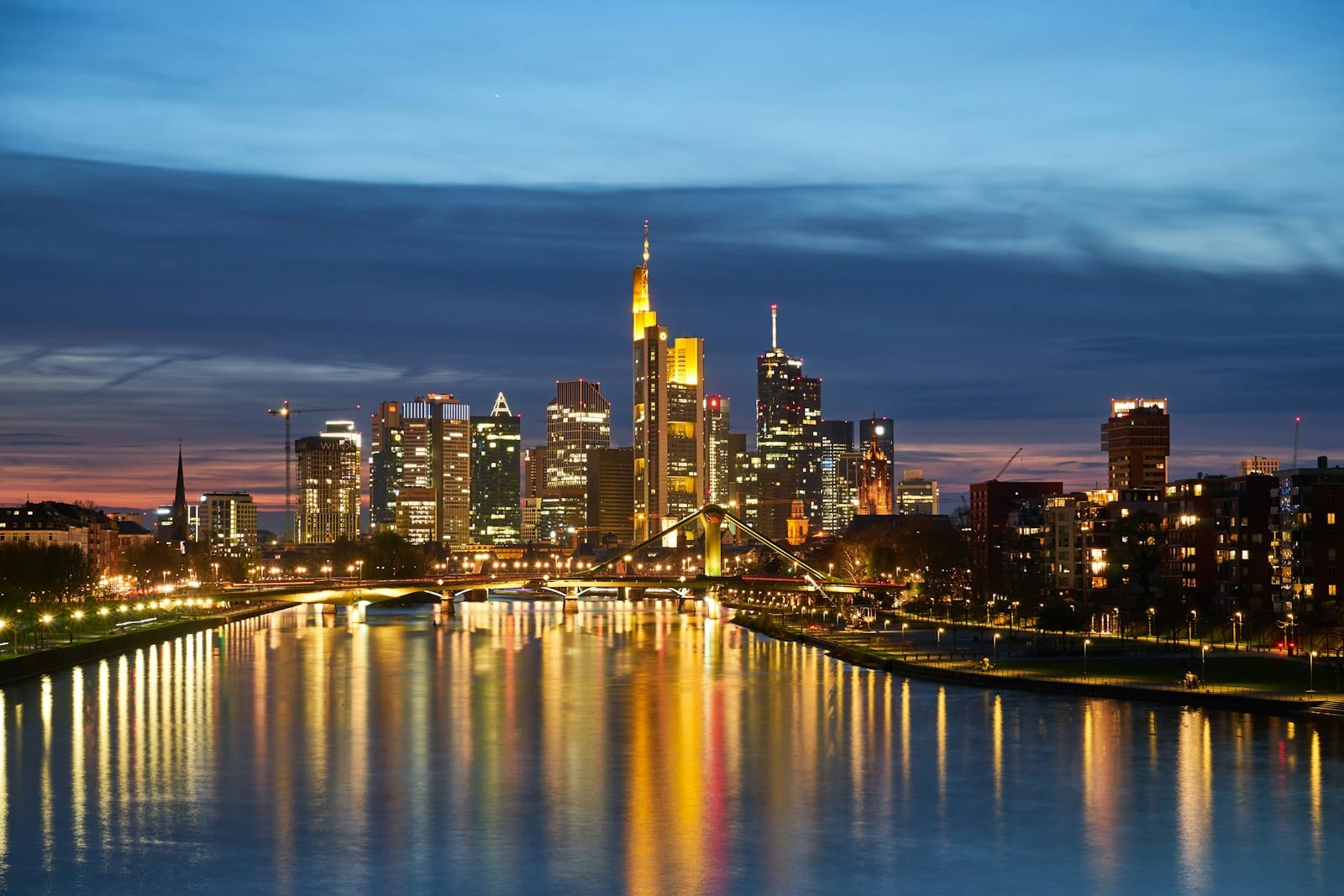Brazil Travel Guide: Rainforests, Rhythms & Coastal Wonders
Intro to Brazil Travel Guide
Start planning your journey with our complete Brazil Travel Guide — from Carnival’s electric pulse and rainforest adventures to sun-drenched coastlines and Afro-Brazilian soul.
Brazil is not just a country — it’s a continent-sized sensation. The largest nation in South America, it stretches from the Amazon Basin to the beaches of Bahia, blending Indigenous, African, and European influences into one of the world’s most dynamic cultural tapestries. Whether you’re sipping caipirinhas on Copacabana, marveling at Iguazu Falls, or hiking in the Chapada, Brazil thrills travelers with rhythm, color, and nature in every direction.
Explore immersive Brazil tours and discover unforgettable things to do in Brazil — from samba nights and surf towns to jungle treks and riverfront wildlife safaris.
💡Quick Facts:
Continent: South America
Country: Federative Republic of Brazil
Area: 8,515,767 km² (largest country in South America)
Population: ~217 million (2024 est.)
Density: ~25 people/km²
Capital: Brasília
Regions/Subregions: 5 regions – North, Northeast, Central-West, Southeast, South
Language(s): Portuguese (official); regional Indigenous and immigrant languages present
Currency: Brazilian Real (BRL)
Time Zone(s): Ranges from UTC–5 to UTC–2 (Brasília is UTC–3)
Airports: GRU (São Paulo), GIG (Rio), BSB (Brasília), SSA (Salvador), REC (Recife), MAO (Manaus)
Climate: Tropical and subtropical, with Amazon rainforest, savannas, and Atlantic coastlines
Known For: Amazon River, Rio Carnival, beaches, samba, football, Iguazu Falls, wildlife biodiversity, Christ the Redeemer
🛂Arrival Info:
Visa-free entry for up to 90 days for most countries including U.S., Canada, EU, UK, Australia, and Japan
eVisa required for some nationalities starting in 2024 — check Brazil’s consulate website
Passport must be valid for at least 6 months
Entry requirements and visa details via Brazil Consulate Portal
💉Health Info:
Yellow fever vaccine recommended, especially for Amazon and inland travel
Other recommended: Hepatitis A, Typhoid, Tetanus, COVID-19, Malaria (select areas)
Good healthcare in cities like São Paulo and Rio; limited access in rural Amazon regions
Travel insurance strongly advised, especially for jungle travel or remote adventure
✅ Check travel insurance options for travel emergencies, delays, and medical needs abroad — get coverage here
✅ Stay Informed with Official Updates: World Health Organization – International Travel and Health | Travel health updates
🚨Travel Advisory:
Current level: Exercise Increased Caution due to crime
Avoid favelas and unregulated areas of major cities
Use caution during protests and festivals (e.g., Carnival crowds)
✅ Stay Informed with Official Updates: US Travel Advisory | UK Foreign Travel Advice
📅Holidays:
Carnival – February/March (movable, nationwide shutdown for several days)
Independence Day – September 7
Republic Day – November 15
Christmas Day – December 25
New Year’s Day (Reveillon) – January 1
Local festivals vary by state and city (e.g., Festa Junina, São João)
💰Money Matters:
Currency: Brazilian Real (BRL)
ATMs (called caixa eletrônico) are widespread in urban centers
Credit/debit cards accepted widely in cities; carry cash in rural areas
Tipping: Not obligatory but 10% is common and often added to bills
Duty-Free Allowances (arriving):
Alcohol: 12 liters
Tobacco: 200 cigarettes
Goods: USD $1,000 limit when entering by air
Receita Federal – Brazilian Customs
✈️Airports:
São Paulo–Guarulhos (GRU) – Brazil’s largest and busiest international hub
Rio de Janeiro–Galeão (GIG) – Second largest, gateway to beaches and Carnival
Brasília (BSB) – Central connection for domestic flights
Other major airports: Salvador (SSA), Recife (REC), Fortaleza (FOR), Manaus (MAO)
Domestic flights often necessary due to large distances
✅ Delayed or canceled flight? Check if you’re eligible for compensation
🚍Transport:
Domestic flights are common between regions
Intercity buses (rodoviárias) are affordable and reliable
Ride-hailing apps: Uber, 99, InDriver are widely used
In cities: Metro in São Paulo, Rio, and Brasília; buses and minibuses elsewhere
Driving is possible but traffic, road conditions, and signage can be challenging
✅ Book reliable airport transfers and in-city rides in advance. Reserve your ride here
📶Connectivity:
Top mobile providers: Claro, TIM, Vivo, Oi
SIM cards available at airports and malls; passport required
Strong 4G coverage in cities; patchy in the Amazon and Pantanal
eSIM supported by major providers
Free Wi-Fi in hotels, airports, and shopping centers
✅ Stay connected abroad with affordable eSIM data packs. Get your eSIM here
📜Laws & Etiquette:
Legal drinking age: 18
Marijuana and drugs are illegal and strictly penalized
LGBTQ+ rights protected nationally; São Paulo Pride is the largest in the world
Avoid political discussions or photographing military/police installations
Respect Indigenous lands and communities — permits may be required for entry
🛡️Emergency Info:
Emergency Numbers:
Police: 190
Fire: 193
Ambulance: 192
Travel insurance is essential for remote travel, jungle treks, and medical costs
Embassies and consulates found in Brasília, São Paulo, and Rio de Janeiro
Register with your country’s embassy for extended stays or rural travel
✅ Use embassy locator tools: Embassies Worldwide
🌦️Weather:
Amazon: Hot, humid, heavy rainfall (Dec–May)
Northeast coast (Recife, Salvador): Tropical with a wet season (Apr–July)
Southeast (São Paulo, Rio): Subtropical – hot summers (Nov–Mar), mild winters
South (Curitiba, Porto Alegre): Temperate – cool winters
Best time to visit: May to September for drier, cooler weather
✅ Stay prepared—check the weather forecast for your destination — Weather Forecast
Brazil by Region – Where to Go
Brazil’s sheer size makes it a land of diverse ecosystems and cultures. Here’s how the country breaks down by major regions.
Southeast Brazil
- Rio de Janeiro: Home to iconic beaches (Copacabana, Ipanema), Christ the Redeemer, and Carnival energy.
- São Paulo: Brazil’s economic heart and a food, nightlife, and art powerhouse.
- Minas Gerais: Colonial towns like Ouro Preto and Tiradentes, baroque churches, and countryside cuisine.
- Espírito Santo: Surf spots, forested mountains, and coastal seafood culture.
South Brazil
- Curitiba: Known for urban planning and lush parks.
- Florianópolis (Santa Catarina): Island life, surfing beaches, and seafood.
- Iguaçu Falls (Paraná): One of the world’s largest and most powerful waterfall systems.
Northeast Brazil
- Salvador (Bahia): Afro-Brazilian culture, colonial architecture, drumming, and street food.
- Recife & Olinda: Historic towns with Carnival parades, art scenes, and riverfront vibes.
- Lençóis Maranhenses (Maranhão): Dune-filled desert dotted with seasonal lagoons.
- Jericoacoara & Fortaleza (Ceará): Wind sports, sand dunes, and laid-back beaches.
North Brazil (Amazonia)
- Manaus: Gateway to Amazon River cruises and jungle lodges.
- Belém: Amazonian cuisine and river trade heritage near the mouth of the Amazon.
- Alter do Chão: White sand river beaches and rainforest charm.
Central-West Brazil
- Brasília: Futuristic capital known for Niemeyer architecture and political history.
- Pantanal (Mato Grosso & Mato Grosso do Sul): One of the best places in the world to see wildlife like jaguars and giant otters.
- Chapada dos Veadeiros (Goiás): Waterfalls, quartz crystal formations, and hiking trails.
Top Places to Visit in Brazil
Natural Wonders
- Iguaçu Falls – Bordering Argentina, with 275 cascading waterfalls.
- Amazon Rainforest – Explore via boat or lodge from Manaus or Belém.
- Pantanal – The largest wetland in the world and South America’s top wildlife destination.
- Lençóis Maranhenses – Surreal sand dunes and freshwater pools.
Iconic Cities & Towns
- Rio de Janeiro – Samba, Sugarloaf, beaches, and endless rhythm.
- Salvador – Colonial charm, capoeira, and Candomblé spirituality.
- Ouro Preto – A preserved colonial town surrounded by green hills.
- Florianópolis – Beach life meets nightlife on a scenic island.
Beach Escapes
- Jericoacoara – Windblown beauty with kiteboarding and sunsets.
- Pipa – Cliffs, dolphins, and bohemian charm in Rio Grande do Norte.
- Ilha Grande – No cars, just hiking trails and tropical beaches.
How to Choose Where to Go in Brazil
- For iconic first-timers: Start with Rio de Janeiro, combine with Iguaçu Falls, and add a beach extension to Ilha Grande or Búzios.
- For nature and wildlife: Choose Amazon cruises or Pantanal safaris.
- For culture and music: Dive into Salvador, Olinda, or São Paulo.
- For off-the-beaten-path adventure: Hike in Chapada Diamantina or dune-jump in Lençóis Maranhenses.
Smart pairings:
- Rio + Iguaçu + Pantanal
- Salvador + Chapada Diamantina
- Manaus + Amazon River lodge
- São Paulo + Minas Gerais towns
How to Get Around Brazil
- Domestic Flights
Due to Brazil’s size, flying is often necessary. Major airlines: LATAM, GOL, Azul. - Long-Distance Buses
Extensive and reliable but slow over long routes. Useful for intercity travel within regions. - Car Rentals
Best in areas like southern Brazil or Minas Gerais. Use caution in big cities. - Ride Apps
Uber is widely used in major cities. Taxis are also common but may charge more. - Boats & Ferries
Amazon River journeys, island access (e.g., Ilha Grande, Fernando de Noronha), and local ferries.
Travel Budget & Costs in Brazil
Brazil can be affordable or high-end depending on where and how you travel.
Daily Budget Estimates
- Budget: $40–$70 (hostels, bus travel, local eats)
- Mid-range: $100–$180 (boutique hotels, domestic flights, guided tours)
- Luxury: $250+ (resorts, private safaris, upscale dining)
Sample Costs
- Rio metro ride: ~$1
- Domestic flight: $50–$120 (average one-way)
- Amazon lodge tour: $300–$600 (2–3 days)
- Dinner for two: $25–$40 (mid-range)
Money Tips
- Carry some cash — card acceptance can be limited in remote areas.
- ATMs widely available, but bring a backup card.
- Tipping is 10% and often included in bills.
Best Time to Visit Brazil
- Summer (Dec–March)
High season with heat, Carnival, and coastal crowds. Great for beach travel. - Shoulder (April–June, Sept–Nov)
Lower prices, mild weather, fewer tourists. Excellent for nature and city combos. - Dry Season in Amazon/Pantanal (May–Oct)
Better for wildlife spotting and easier jungle access. - Carnival (Feb/early March)
Plan months in advance if attending Rio, Salvador, or Olinda’s iconic street festivals.
Must-See Experiences in Brazil
- Dance samba in Rio, whether in Lapa or a Carnival bloco
- Snorkel in Bonito, where crystal-clear rivers host tropical fish
- Cruise the Amazon River, sleeping in hammocks under the stars
- Watch the sunset in Jericoacoara, with drums and dune-top views
- See a jaguar in the Pantanal, one of the best places on Earth for it
- Explore Salvador’s Pelourinho, alive with drumming, faith, and color
- Hike Chapada Diamantina, one of Brazil’s best-kept trekking secrets
- Visit Iguaçu Falls from both Brazil and Argentina sides
Book immersive Brazil tours and experience unforgettable things to do in Brazil — from samba rhythms and sacred waterfalls to Amazonian river life and desert lagoon swims.
Best Travel Itineraries in Brazil
7-Day Classic Brazil
- Days 1–3: Rio de Janeiro (Christ the Redeemer, Sugarloaf, beaches)
- Days 4–5: Iguaçu Falls (Brazil & Argentina sides)
- Days 6–7: Ilha Grande for relaxation and snorkeling
10-Day Culture & Nature Mix
- Rio → Salvador → Chapada Diamantina
- Combines Afro-Brazilian culture, colonial towns, and adventure
14-Day Wildlife & Wonder Itinerary
- São Paulo → Pantanal → Iguaçu → Amazon Lodge (via Manaus)
- Incredible biodiversity and contrasting biomes
Local Cuisine & Culinary Experiences
Must-Try Dishes
- Feijoada – Black bean and pork stew, Brazil’s national dish
- Moqueca – Fish stew with coconut milk and dendê oil (Bahia specialty)
- Pão de Queijo – Chewy cheese bread from Minas Gerais
- Açaí Bowls – From the Amazon, topped with banana and granola
- Churrasco – Brazilian barbecue, best experienced at a rodízio restaurant
- Brigadeiro – Chocolate truffle treat, a party staple
Food Experiences
- Street food in São Paulo (pastel, coxinha, acarajé)
- Mercado Municipal (São Paulo) or Ver-o-Peso Market (Belém)
- Cachaça distillery tours in Minas Gerais
- Jungle foraging and Amazon cooking in Manaus or Alter do Chão
Taste your way through Brazil with grilled meats, Afro-Brazilian spices, rainforest fruits, and caipirinhas on the beach.
Travel Safety & Cultural Etiquette in Brazil
Safety Tips
Stick to well-traveled areas, especially in large cities. Avoid flashing valuables. Use hotel safes. In remote areas, go with guides.
Cultural Notes
- Brazilians are warm and expressive — greetings often involve cheek kisses or handshakes.
- Avoid political discussions unless you know your audience.
- Tipping is appreciated but not obligatory beyond included service fees.
Where to Go Next – Pair Brazil with These Destinations
- Argentina: Easy connection from Iguaçu Falls or southern cities
- Peru: Combine with Amazon or Andes via Lima or Cusco
- Colombia: Caribbean flair and direct flights from São Paulo or Rio
- Uruguay: From southern Brazil to Montevideo or Punta del Este
More Destinations Worth Exploring:
Argentina Travel Guide | Peru Travel Guide | Colombia Travel Guide | South America Travel Guide
Final Planning Checklist for Brazil
- Secure visa or check visa waiver eligibility (many now exempt)
- Book domestic flights early, especially during holidays
- Learn basic Portuguese — English is not widely spoken outside major cities
- Pack for diverse climates: humid rainforest, cool highlands, sunny beaches
- Get recommended vaccines (e.g., yellow fever for Amazon/Pantanal)
- Carry digital and printed copies of bookings and ID
- Confirm credit card access for remote areas and rural towns
- Travel light — laundry is widely available, and domestic baggage limits can be strict
Explore Brazil with confidence using our trusted tips, local insights, and region-by-region planning tools.
For more expert travel tips, practical strategies, and trusted tools — visit our Homepage and get inspired for your next trip.

